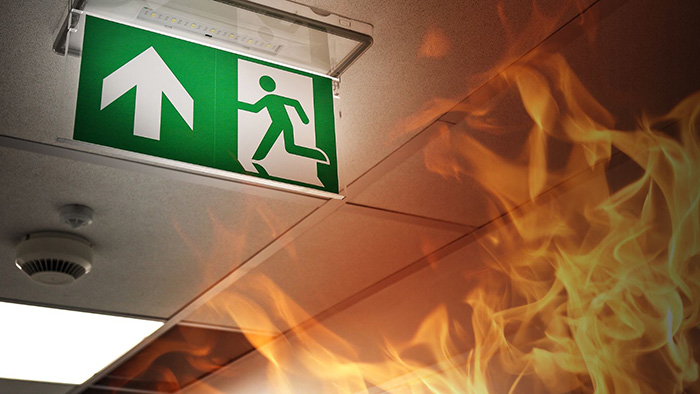The Risk Of Financial And Reputational Damage As A Result Of Preventable Fires Has Never Been Greater

Paul Livett, CEO of Infoo, writes on how the existing pathways for communicating recalls and product safety notices to individuals and organisations are inadequate and ineffective, which can result in preventable injuries, property and reputational damage and sadly sometimes leads to deaths. Innovative solutions to address appliance safety now exist, helping to identify dangerous recalled products and quickly remove them from circulation.
Dangerous Products That Are Not Identified And Removed Are A Significant Fire Risk
Managers of commercial buildings are increasingly exposed to financial and reputational damage as a result of preventable appliance and electrical fires. Faulty electrical equipment which is the subject of a recall notice or safety advisory from the manufacturer is regularly being overlooked and not removed promptly enough. This type of risk is most likely already present in many commercial buildings, and only regular and automated checks will identify items at risk and remove them from circulation.
There are tens of millions of unsafe electrical appliances in circulation today, leading to weekly fires and safety events occurring. Historically, the majority of fires have been due to large appliances, but as the number of lithium battery powered appliances increases, so does the number of fires. Today even the most innocuous items can cause serious fires. Fires in commercial buildings are a risk to anyone in the building, as well as neighbouring buildings.
According to the Home Office, in the 12 months ending September 2023, there were 39,045 building fires in England. Every week in England alone, there are approximately 61 serious fires caused by faulty electrical goods. This demonstrates a clear need for people and businesses to have an easy and effective tool to check if their products have been deemed faulty and subsequently recalled by manufacturers.
Information Regarding Faulty And Dangerous Products Is Difficult To Access
The existing pathways for communicating recalls and product safety notices to individuals and organisations are inadequate and ineffective. Worryingly, in the UK, only 10%‑20% of recalled appliances actually get recalled, therefore, the necessary repairs are not carried out, and dangerous products remain within buildings.
Historically, each manufacturer was responsible for communicating a product recall to the market. Often once the announcement was made, little else was done to follow up with owners. The process of identifying recalled products currently falls on the shoulders of the owners of the products and is a complicated process to carry out. Until now, no electronic system has existed that automates the process. To find out if an appliance is subject to recall, you would need to go to numerous government and public databases and search manually. You would also need to trail through the manufacturer’s own websites and often look through press articles to ensure you capture all recalls.
This process needs to be repeated on a regular basis to ensure that new recalls are not released that cover any of the items you own. Manufacturers do not keep records of recalls online indefinitely, so for older appliances, not identifying them immediately might mean they are missed.
Taking Action Is Important
Risk management is a fundamental part of executive and operational standards and practice but often excludes the inherent danger from faulty appliances and devices. Every facilities manager is required to execute comprehensive due diligence concerning the risk of the faulty electrical equipment they may provide to customers/users.
The cost of missing recalls is judged in both financial, human and reputational terms. For an organisation whose properties are used by a large number of clients, the risks are significant.
What Solutions Exist To Help Facility Managers Mitigate The Risks Posed By Dangerous Appliances?
There are now ways to help minimise the risk specifically relating to faulty electrical goods and maximising due diligence. For the first time, it is possible to automatically identify electrical items and cross‑reference them against all the recalls in the UK, making the process as simple as possible. Once identified, these products can be tracked in real time to ensure that any new recalls do not pose a danger.
Facility managers can arrange for checks to be conducted via a number of different means including through a smartphone App, allowing for easy access for on‑site personnel, a web Interface, which is suitable for office‑based checks, or API integration, which facilitates direct integration with existing systems for seamless operation.
Conclusion
It is key that companies and organisations adopt the tools and services available to solve the product recall and safety information problems faced. These problems cause preventable injuries, property and reputational damage and sadly sometimes lead to deaths. Innovative solutions to address appliance safety now exist, helping to identify dangerous recalled products.
With straightforward solutions now available to help facility managers bolster safety in the buildings that they manage, there is no better time to start giving the problem of dangerous recalled products the attention it deserves. The costs associated are minimal compared to the financial and reputational risk of having a fire or safety event take place at one of your premises.

























































